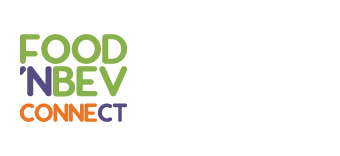Picking Up Speed: Better-for-You Continues to Win!
We have so much positive news going on across the Food’NBev Connect portfolio of brands – from Zesty Z now testing their popcorn in 30 Colorado Whole Foods stores, to several brands coming to market with their initial production runs (Patch Organic and Seir Hill), to Asarasi raising a record amount in the crowdfunding effort following their appearance on The Drapers, to a number of brands getting into new distribution arrangements and others in talks with strategic investors.
The Fall has seen an explosion of new activity and growth for most brands and our focus in workshops on how the world is changing under Covid–19 seems to have yielded some direct results. I am turning bullish going into 2021 that our brands have generally figured out the new normal and that the consumer is continuing to pursue the long-term trends we identified for better-for-you products, with better nutrition, cleaner labels, greater sustainability and healthier ingredients. In frozen, center aisle and beverages, better-for-you is continuing to win and our brands are overwhelmingly positioned in this space.
Changing Our Educational Workshop Approach For 4Q
Moving into late Fall and early Winter, I want to change our workshop and educational thematic to focus more on helping brands by emphasizing better execution. I have talked to a number of our CEOs and some of our advisers, and we are at a great point that such a focus, under a slightly altered presentation approach, can help us solve two issues that have been brought to my attention.
First, we have a number of new brands and advisers who have joined Food’NBev Connect since our last in-person meeting pre-covid in March. While I have worked with most of them to find places where our adviser team can add value, many brands don’t really know the other CEOs or all of our advisers, so the sense of community and peer assistance is slowed a bit, yet it remains so important to the value that the Food’NBev Connect model provides.
Secondly, our workshops need more interaction and we can add a greater problem solving emphasis than just general education or discussion of a topic. CEO’s have been calling me with their unique questions and issues, and my response is often, “Have you spoken with (fill in adviser or Brand CEO)…about that? They have worked that issue before or may know someone who can help.” Many of our brands have seen the synergistic value of working with and helping other brands in our portfolio and how the ease of peer group problem solving, sharing experience and success stories, amplifies everyone’s growth opportunities.
Proposed Format & Topics
Here is what I am proposing to the community for the next several workshops:
1) We will focus on one broad topic per workshop, such as the following:
– Front office/sales & marketing issues – including digital marketing and social media best practices, working with on-line and brick and mortar distributors & brokers, sampling and acquisition programs, public relations, new product development, etc.
– Finance and Ops – including software solutions, banking, merchant agreements, outsourcing partners and advice providers, forecasting and planning, developing a business financial model, preparing for fund raising, working with venture partners and affiliates, creating a data room, reporting, etc.
– Protecting the business – including legal issues, intellectual property, licensing, trademarks, patents, certifications, insurance, labor and hiring practices, overall risk management
2) Each session will feature sign-up pre-registration and will be limited to the first 12 brands for each session so that discussion can be maximized. This may even be too many, but let’s see how it goes. I will give some priority to newer brands, but otherwise, it will be first to respond by email to me once we send out the invite to sign up for each session. Not all brands will be interested in all topics, but your response will indicate interest and we can adjust as we go.
3) I will invite 2 – 3 of our advisers who have expertise in each area to join our call. I will ask them to first frame some key current topics and help us get conversation going, then it will be up to the brands to direct where it goes, with our advisers on the line to help us answer any tough questions or suggest improvements or fresh ideas on specific topics as CEOs with experience can share their approach to problem solving or which providers they used to solve a key problem. Brands, bring your tactical and executional questions and ask for help from the community.
Again, the goal is to provide a problem solving forum that is active vs. passive and to get community interaction increased and newer members to improve their involvement and assimilation. Each session will likely run 60 to 75 minutes in length, and we can always repeat sessions if they get oversubscribed or more conversation is needed.
Let me know your thoughts ASAP…I will get a schedule out for these meetings, hoping to have at least two of the three sessions done between now and Thanksgiving.
I will send out invites for each session as we get closer to these great events. Stay tuned!
